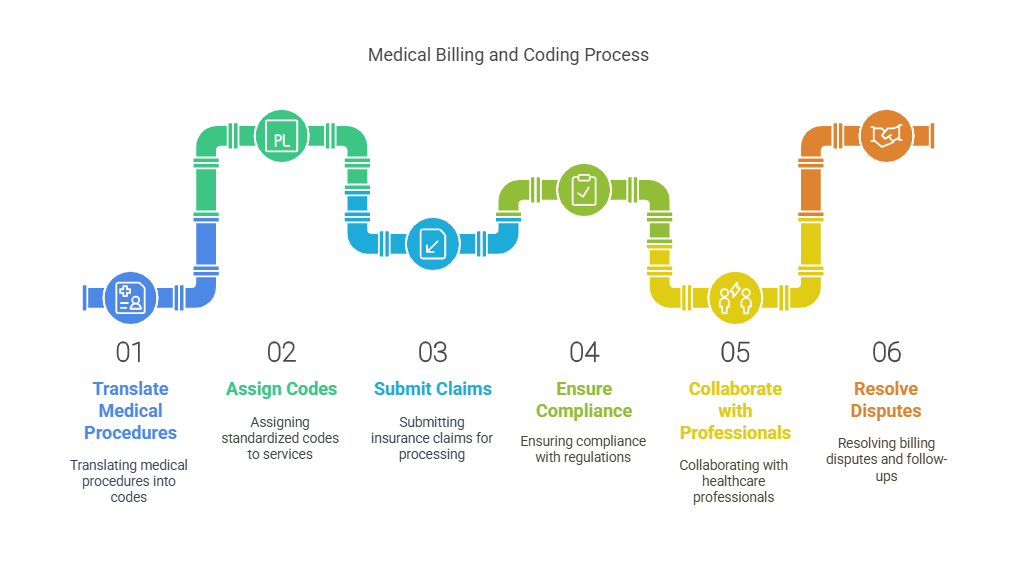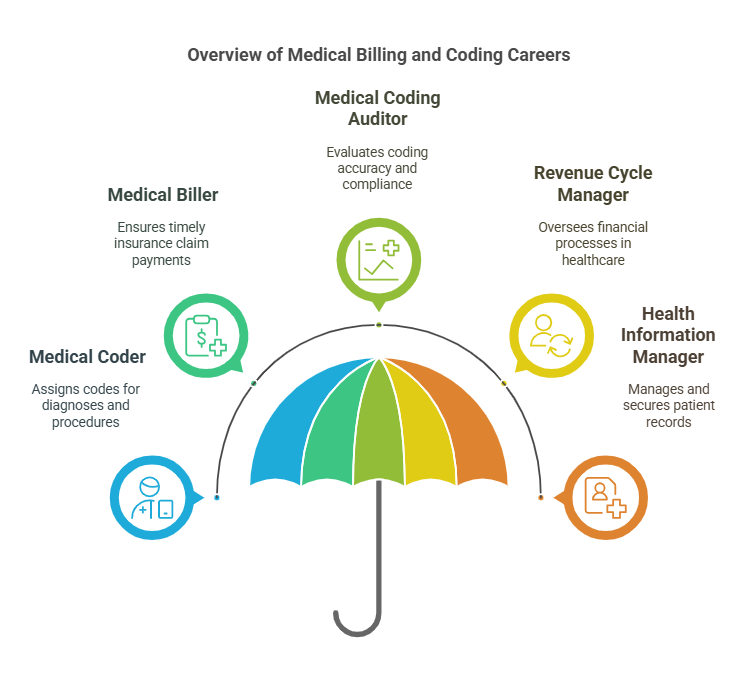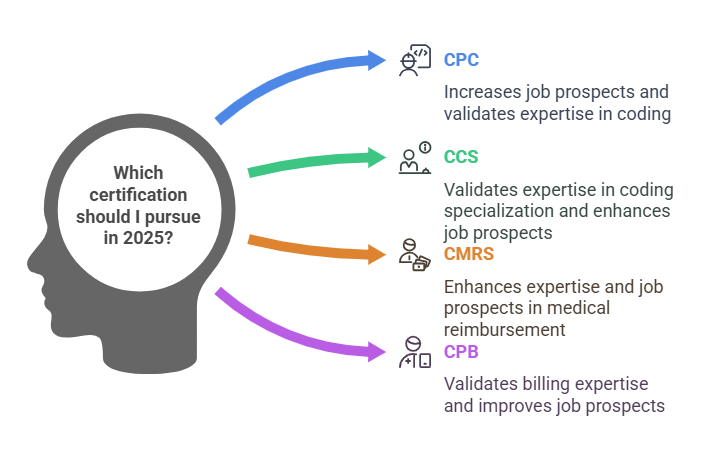Top Careers in Billing and Coding Medical: Start Your Path Today
The healthcare industry continues to evolve, and with it comes a growing demand for skilled professionals in medical billing and coding. As we step into 2025, this career path offers unmatched opportunities for growth, job security, and financial stability. If you're considering a career in this dynamic field, now is the time to dive in. In this comprehensive guide, we’ll explore the top careers in medical billing and coding, the skills you need, the certifications that matter, and the trends shaping the industry.
What is Medical Billing and Coding?
Medical billing and coding is the systematic process of translating medical procedures, diagnoses, and treatments into standardized codes. These codes ensure accurate billing, insurance claims processing, and proper reimbursement for healthcare services. Every test, diagnosis, and treatment is recorded using universally recognized code sets like ICD-10, CPT, and HCPCS. Medical billing and coding certifications play a crucial role in validating the expertise of professionals, ensuring they are well-versed in these coding systems and can accurately manage the financial aspects of healthcare services.
Medical billers and coders act as the bridge between healthcare providers and insurance companies, ensuring the financial health of medical institutions while contributing to the integrity of patient records. Their expertise ensures that insurance claims are accurate, compliant, and processed efficiently.
Key Responsibilities:
Assigning medical codes to services and procedures
Submitting insurance claims
Ensuring compliance with healthcare regulations
Collaborating with healthcare professionals
Resolving billing disputes and following up on unpaid claims
Why Choose a Career in Medical Billing and Coding in 2025?
The healthcare sector is booming, and medical billing and coding professionals are more crucial than ever. Here’s why:
High Demand:
The Bureau of Labor Statistics (BLS) projects a 13% growth in medical records and health information technician jobs through 2030, outpacing many other professions.
Competitive Salaries:
In 2025, the average salary for medical billing and coding specialists is expected to range from $45,000 to $70,000 annually, depending on location, experience, and specialization.
Career Flexibility:
Many medical coders work remotely, offering a better work-life balance.
Job Security:
Healthcare is essential; the need for accurate medical documentation will never diminish.
Entry Opportunities Without a Medical Degree:
You don’t need years of medical school—specialized training and certification programs open the door to this profession.
Career Paths in Medical Billing and Coding
1. Medical Coder
Medical coders assign standardized codes for diagnoses, procedures, and treatments. They use code sets like ICD-10-CM, CPT, and HCPCS to translate medical documentation into universally recognized codes.
Job Responsibilities:
Analyzing patient records to assign accurate codes
Collaborating with medical professionals for documentation accuracy
Staying updated with changes in coding regulations
Salary Outlook (2025): $45,000–$70,000
Workplaces: Hospitals, clinics, insurance companies, and consulting firms
2. Medical Biller
Medical billers ensure that healthcare providers receive timely payments by submitting insurance claims and handling reimbursements.
Job Responsibilities:
Preparing and submitting claims to insurance companies
Reviewing claims for accuracy and completeness
Communicating with patients and insurers to resolve disputes
Salary Outlook (2025): $43,000–$65,000
Workplaces: Medical practices, billing companies, and insurance firms
3. Medical Coding Auditor
Auditors evaluate coding accuracy and compliance with regulatory standards.
Job Responsibilities:
Conducting internal audits to identify documentation errors
Training coders on the latest guidelines
Preparing reports for compliance teams
Salary Outlook (2025): $55,000–$80,000
Workplaces: Large healthcare systems, insurance companies, government agencies
4. Revenue Cycle Manager
This role oversees the entire financial process, from patient registration to final payment.
Job Responsibilities:
Managing billing and coding teams
Analyzing financial reports to improve efficiency
Implementing new billing systems and practices
Salary Outlook (2025): $65,000–$100,000
Workplaces: Hospitals, healthcare systems, medical billing firms
5. Health Information Manager
Health information managers handle the secure management of patient records.
Job Responsibilities:
Ensuring data accuracy and security
Implementing electronic health record (EHR) systems
Training staff on data handling practices
Salary Outlook (2025): $70,000–$110,000
Workplaces: Hospitals, outpatient care centers, government agencies
Key Skills for Success in Medical Billing and Coding
Attention to Detail: Medical coding errors can lead to denied claims and financial losses.
Analytical Thinking: Understanding complex medical information requires critical thinking.
Tech-Savviness: Familiarity with EHR systems and medical billing software is essential.
Communication Skills: Collaborating with healthcare providers and insurance companies demands clear communication.
Regulatory Knowledge: Staying informed about changes in HIPAA, ICD updates, and insurance regulations ensures compliance.
Top Certifications to Consider in 2025
Certified Professional Coder (CPC) – American Academy of Professional Coders (AAPC)
Certified Coding Specialist (CCS) – American Health Information Management Association (AHIMA)
Certified Medical Reimbursement Specialist (CMRS) – American Medical Billing Association (AMBA)
Certified Professional Biller (CPB) – AAPC
Why Certification Matters:
Increases job prospects and earning potential
Validates your expertise to employers
Ensures you stay current with industry standards
Trends Shaping Medical Billing and Coding in 2025
1. AI Integration and Automation
Artificial intelligence (AI) is revolutionizing medical coding by automating routine tasks and reducing human error. Tools like natural language processing (NLP) streamline the coding process, allowing professionals to focus on complex cases.
Insight: According to the National Institutes of Health (NIH) (nih.gov), AI-driven coding software is expected to become a standard feature in healthcare facilities by 2025.
2. Telehealth Expansion
The rise of telehealth services during the pandemic continues to influence coding practices. New codes have been introduced to document virtual consultations, remote monitoring, and digital health services.
Fact: The Centers for Disease Control and Prevention (CDC) (cdc.gov) reported a 154% increase in telehealth visits during the early pandemic, a trend that remains strong.
3. Cybersecurity and Data Protection
With more patient records digitized, safeguarding sensitive information is paramount. Medical billers and coders must adhere to evolving HIPAA guidelines to protect patient data from breaches.
Recommendation: Stay updated with guidance from the Office for Civil Rights (OCR) at the U.S. Department of Health and Human Services (hhs.gov).
4. Increased Remote Work Opportunities
Remote coding jobs have surged, allowing professionals to work from anywhere with secure internet access. This flexibility has expanded the talent pool and improved job satisfaction.
5. Value-Based Care Models
Healthcare providers are shifting toward value-based care, emphasizing patient outcomes rather than service volume. Accurate coding is crucial to measure performance and reimburse providers accordingly.
How to Get Started in Medical Billing and Coding
Step 1: Choose the Right Training Program Look for programs accredited by reputable organizations like AAPC or AHIMA. Online courses offer flexibility, while in-person classes provide hands-on experience.
Step 2: Master Essential Skills Focus on medical terminology, anatomy, and coding systems like ICD-10, CPT, and HCPCS.
Step 3: Obtain Certification Certification sets you apart from non-certified candidates and increases earning potential.
Step 4: Gain Practical Experience Internships and entry-level positions build real-world skills and industry connections.
Step 5: Stay Updated Continuous education ensures you stay ahead of industry changes.
Conclusion: Your Future in Medical Billing and Coding
Medical billing and coding is more than just numbers and codes—it’s about ensuring that healthcare providers get reimbursed accurately, patients receive proper documentation, and the entire system functions smoothly. As the healthcare landscape evolves in 2025, this career will continue to be indispensable.
With the right training, certification, and dedication, you can secure a rewarding position in this high-demand field. Start your journey today and be part of the healthcare industry’s backbone.
Ready to begin your career? Enroll in a certified medical billing and coding program and open the door to endless opportunities in healthcare administration.







